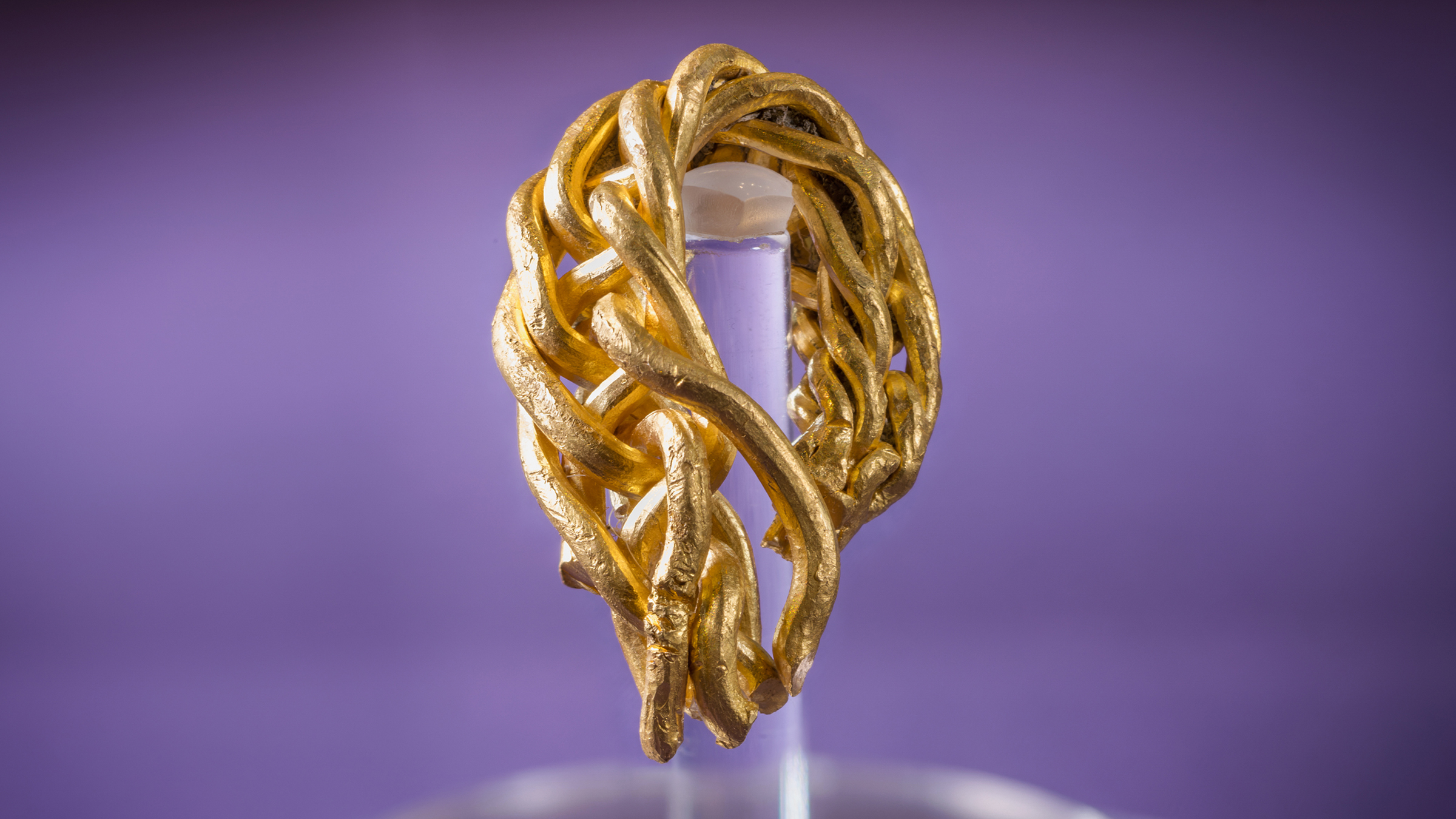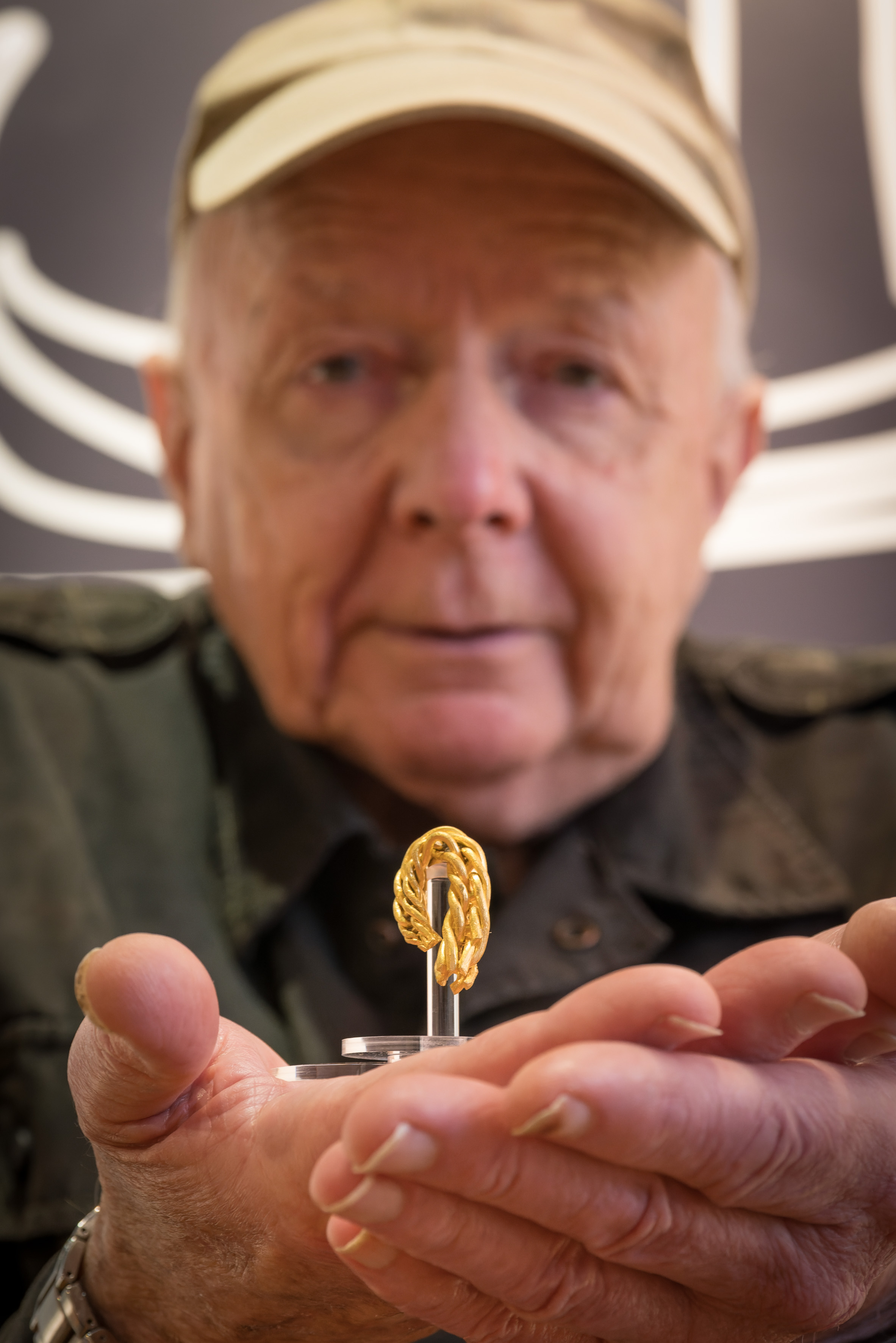Braided gold Viking arm-ring discovered by amateur metal detectorist on Isle of Man
Around 1,000 years ago, this Viking Age arm-ring from the Isle of Man was likely used not only to display its owner's wealth but also to serve as currency in financial transactions.

An amateur metal detectorist has discovered a 1,000-year-old gold Viking arm-ring — a piece of craftsmanship created by braiding together eight gold rods — that was snipped apart, likely to help its owner cover costs during financial transactions.
The arm-ring was found by Ronald Clucas this spring on the Isle of Man, an island in the Irish Sea between Britain and Ireland. Numerous artifacts from the Viking Age (A.D. 793 to 1066) have been found on the isle, which Vikings initially used for trading and later settled, starting in the 800s.
"It was quite a big shock to discover this lovely piece of gold, I couldn't really believe it at first!" Clucas, a member of the Manx Detectorist Society, said in a statement from Manx National Heritage. "Gold generally gives a very low signal on the detector, so you can't really predict what is going to be uncovered."
The goldsmith who made the arm-ring about a millennium ago was clearly skilled, braiding eight gold rods together. Clucas found the ring folded in two, measuring about 1.5 inches (3.7 centimeters) wide and 3 inches (7.7 cm) long. It weighs nearly 1 ounce (27.3 grams), a "significant weight" for jewelry this size, according to the statement.
On May 29, the Isle of Man Deputy Coroner of Inquests declared that the arm-ring was "treasure," a designation given to U.K. artifacts made of precious metals that are at least 300 years old.
The arm-ring is the second piece of "Viking treasure" found by Clucas, who has been metal detecting for 50 years. Previously, he unearthed a silver ingot and a lead ingot, which he found in 2005.
Related: 2,000-year-old spoon from Isle of Man may have been used in blood rituals for fortune telling
Get the world’s most fascinating discoveries delivered straight to your inbox.

A bracelet that's both bling and bank
The arm-ring, which dates to around A.D. 1000 to 1100, was likely used both as jewelry and as currency, according to Allison Fox, curator for archaeology at Manx National Heritage.
"Jewellery items such as this had several functions in the Viking Age both as prized personal possessions and visible displays of wealth," Fox said in the statement. "They were easily portable and were also used to cover costs in financial transactions."
Often, Viking Age transitions included hacksilver (also known as hacksilber), or pieces of silver that were weighed to calculate their worth for financial deals. On the Isle of Man, there was a dual economy of coins and bullion pieces of silver or gold. However, gold pieces are rarer from the Viking Age, making this intricate bracelet an uncommon find.
The arm-ring has likely been cut twice, possibly from two different transactions, Fox noted.
"One cut removed the terminal end of the arm-ring, the other one cut the original complete arm-ring almost in half," Fox said. "For reasons we will never know, this fragment of gold arm-ring was buried in the ground until discovered. It may have been hidden for safe-keeping, could just have been lost or may even have been buried as an offering to the Viking Gods."
The arm-ring is now on display in the Manx Museum's Viking Gallery, alongside other Viking Age hoards of silver and gold.
Viking quiz: How much do you know about these seaborne raiders, traders and explorers?

Laura is the managing editor at Live Science. She also runs the archaeology section and the Life's Little Mysteries series. Her work has appeared in The New York Times, Scholastic, Popular Science and Spectrum, a site on autism research. She has won multiple awards from the Society of Professional Journalists and the Washington Newspaper Publishers Association for her reporting at a weekly newspaper near Seattle. Laura holds a bachelor's degree in English literature and psychology from Washington University in St. Louis and a master's degree in science writing from NYU.
You must confirm your public display name before commenting
Please logout and then login again, you will then be prompted to enter your display name.

